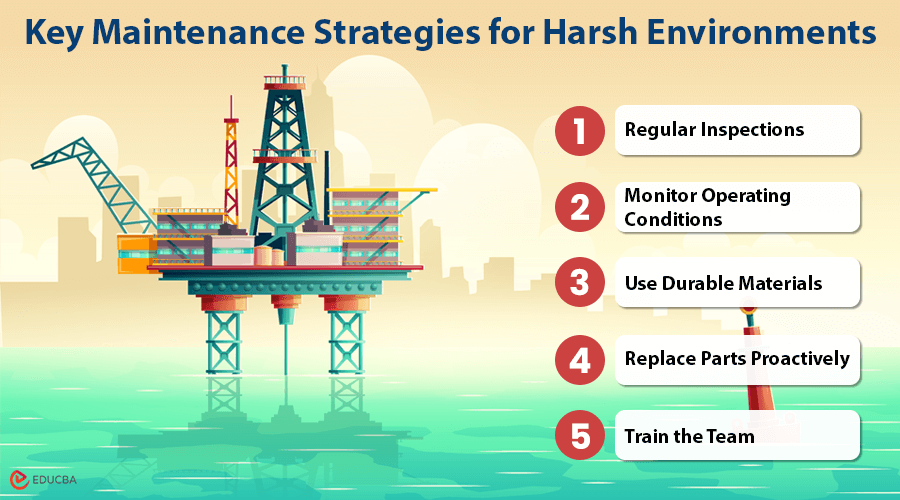
Oil Rig Maintenance in Harsh Conditions
Oil rigs operate in extreme environments—relentless saltwater exposure, high and low temperatures, and constant mechanical stress. These conditions can affect equipment, especially the machinery that drives operations. Even minor issues can escalate to costly downtime or serious safety hazards without regular maintenance. Effective oil rig maintenance is crucial to keeping operations smooth and avoiding disasters. The equipment on an oil rig handles significantly more stress than in typical industrial settings, making a comprehensive maintenance plan essential to reducing risks and ensuring efficiency.
Pumps: The Backbone of Operations
Pumps are vital to oil rigs, managing drilling fluids, water injection, and oil transfers. When a pump fails, productivity halts, leading to costly disruptions and delays. The harsh conditions on a rig—abrasive and corrosive liquids—accelerate wear on components such as mechanical seals and bearings.
Key Considerations for Pumps:
- Always maintain an inventory of replacement parts like seals and bearings to avoid delays caused by long supply chain lead times.
- Ensure a solid inventory of key components to address potential failures quickly and keep operations running.
- Replace wear-prone components at scheduled intervals to minimize unplanned failures.
- Track operating metrics such as temperature, pressure, and vibration to identify issues early.
Key Maintenance Strategies for Harsh Environments
Maintaining oil rig equipment demands more than routine care; it requires strategic approaches tailored to extreme conditions. Here are actionable tips for effective oil rig maintenance:
1. Regular Inspections
- Schedule frequent checks for signs of corrosion, leaks, or unusual wear.
- Early detection prevents minor issues from becoming major problems.
2. Monitor Operating Conditions
- Keep a close eye on key metrics like temperature, pressure, and vibration levels.
- Address irregularities promptly to maintain performance.
3. Use Durable Materials
- Opt for corrosion-resistant alloys, reinforced gaskets, and high-durability seals to extend equipment life.
4. Replace Parts Proactively
- Do not wait for failures. Scheduled replacements reduce downtime and prevent costly breakdowns.
5. Train the Team
- Ensure maintenance crews can identify problems, perform basic repairs, and understand the impact of harsh environments on equipment.
Spare Parts: The Safety Net
Oil rigs require spare parts, especially given their remote locations. Delayed shipments can halt production for days, leading to substantial losses. Maintaining a robust inventory of critical components like seals, bearings, and gaskets is non-negotiable.
Think of spare parts as insurance. While there is an upfront cost, it is far less than the financial impact of extended downtime. A well-stocked inventory enables crews to address issues promptly, ensuring smooth operations.
The Value of Preventative Maintenance
Delaying maintenance to save costs often results in more significant problems later. Equipment failures can:
- Disrupt production
- Damage interconnected systems
- Create safety hazards
- Leads to expensive repairs
Benefits of Preventative Maintenance:
- Cost Savings: Replacing a worn seal is far cheaper than repairing a pump damaged by failure.
- Enhanced Efficiency: Well-maintained equipment consumes less energy and operates more effectively.
- Long-Term Reliability: High-quality parts and regular care extend equipment lifespan.
Skilled Teams: The Foundation of Effective Maintenance
Even with the best tools and parts, skilled personnel are crucial to successful oil rig maintenance. A well-trained crew can:
- Identify potential issues before they escalate
- Perform efficient troubleshooting
- Ensure repairs are long-lasting
Investing in team training builds expertise in:
- Inspecting equipment under extreme conditions
- Recognizing early warning signs
- Executing maintenance protocols effectively
Maintenance and Safety
Safety is a cornerstone of oil rig maintenance. Faulty equipment is not just inconvenient; it is dangerous. Leaking seals or failing pumps can lead to accidents, especially in high-pressure systems or when handling hazardous fluids.
Key Practices for Safety:
- Adhere to regular maintenance schedules.
- Perform timely repairs using high-quality components.
- Establish clear maintenance protocols to create a secure environment for the crew.
Addressing Challenges of Remote Locations
Oil rigs’ isolation adds complexity to maintenance. With limited access to suppliers, crews must be self-sufficient. Proper planning and preparation are critical to minimize delays and tackle unexpected issues efficiently.
Tips for Managing Remote Maintenance:
- Stock ample spare parts and backup tools.
- Plan for worst-case scenarios with contingency supplies.
- Foster a proactive approach among the team.
Building a Proactive Maintenance Culture
A proactive approach to oil rig maintenance protects equipment and fosters a culture of readiness. Leadership plays a key role in:
- Communicating the importance of maintenance
- Providing consistent training
- Encouraging early issue detection and resolution
Maintenance becomes second nature when every team member understands their role in preventative care.
Final Thoughts
Effective oil rig maintenance in harsh conditions requires planning, effort, and the right resources. As critical components, Pumps demand regular checks and high-quality spare parts to ensure seamless operations.
Oil rigs can minimize downtime, save costs, and enhance safety by adopting proactive strategies such as routine inspections, skilled personnel, and adequate spare part inventories. Preparation and preventative care are the keys to maintaining productivity and security, no matter the challenges that arise.
Recommended Articles
We hope this guide helps you master oil rig maintenance strategies. Check out these recommended articles for more insights on optimizing operations in challenging environments.

